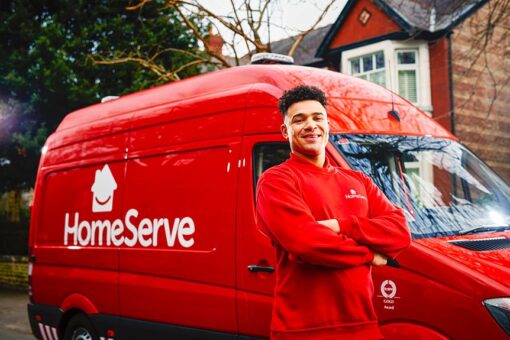What do you do when your kitchen sink springs a leak? If you’re covered by Homeserve’s insurance you’d call them up and ask for a fix pronto. They have a call centre to handle claims when home issues arise – plumbing, gas, electrics, drainage, and so on – and they have a team of engineers ready to fix problems once the claim is raised.
They ran a pilot project to see if they could automate part of the process, and the result is their automated agent called Hana. The stakes were high – they discovered it’s hard to digitise the insurance industry. And they knew “if a customer drops out of this journey, it’s not their fault – it’s ours”.
Phil Jordan was Homeserve’s Head of Contact Channel Automation and Self Service, and he gave Kane Simms a fantastically detailed rundown on their experiences in his VUX World interview.

Perhaps it’s best to let the pros fix it?
Effortless self serve
Homserve wanted to see how it could automate customer service. Why?
Its call centre was receiving lots of claims that were simple to describe, such as “I’ve got a faulty tap in my bathroom”, and Phil’s team saw an opportunity to make the customer call quicker with automation, putting less strain on the call centre. All the customer wants is an engineer to fix the problem asap so they can get on with their life.
As Phil says, “we’re trying to offer that effortless self-service experience, and we want to leave them more satisfied than when they speak to one of our representatives. So we wanted to automate some of their simpler, more high volume transactions, but we wanted to do it in a way that was easy – easier than speaking to a human.”
In order to achieve it, they needed to establish who the customer is, what problems they’ve got, the date for the engineer to visit and a contact number.

Start listening
First, they tried to test their hypotheses before committing. The proof of concept was simple – they asked customers “how can we help you today?”
The aim for this 6 week test was to gather data before building anything. They used this data to form a language model based on real customer utterances.
Get specific
When testing the language model, Homeserve wanted to test whether the AI assistant could identify the customer’s specific problems.
They focused on blockage issues – toilets, drains, kitchen sinks – regular everyday issues in the home. How well could the assistant identify those issues? Could it identify the issue at such a level of detail that a product code could be assigned to the case in the back office system? If so, this would enable the assistant to raise a case for an engineer call out.
It turns out, the hypothesis was proven – they could identify what the caller wanted accurately, so they continued iterating.
Launch
And what have they created since then?
Hana can now raise claims, book boiler services and provide a health check to customers to ensure their boiler is working properly when they buy Homeserve’s cover.
Some specific lessons from Homeserve
Phil shared a lot of learnings and how to get automation right in your organisation.
- Research what you already have available to you. If you already have a digital channel where people can raise claims, then you likely already have various APIs hooked up which will be useful to a conversational AI channel.
- Homeserve had to consider how to schedule the engineer’s visit. Reading 14 available dates out aloud via voice is going to drive the customer up the wall – it’s too much information! Luckily, Phil’s team found a more efficient approach. They found that around 80% of customers just wanted the visit asap, so instead they simply suggested “the earliest we can come to you is on X date” and that’s been working just fine.
- It discovered some ‘simple’ data entry tasks are complex with voice. For example, customers needed to give their expiry date from their payment card, and Phil’s team found there were many surprising ways this simple piece of information could be communicated. Their solution? They rephrased the question so they now ask “please say your expiry date as written on the card – month month, day day, year year” and found that 20% less callers gave up at this stage.
- Phil and his team had to gain the trust of their management before starting. AI is an investment, and you’re never sure exactly what you’re going to find out when you start. Luckily, Homeserve was up for the challenge.
Higher ratings than a live agent
So how well has the system performed? Very well, as it turns out. Homeserve provides every caller with a satisfaction survey. Hana is rated in exactly the same way as the call centre agents, and as it turns out, Hana is consistently rated higher than a live agent.
Phil says to take that with a pinch of salt though! Hana’s purpose is to take the easy calls, so that live agents can focus on the harder stuff. This means that Hana’s doing the easier job, for which it’s easier to be rewarded.
But let’s look at that another way. Hana is the automated solution that takes some strain away from the call centre – currently 10% of all claims and has a success rate of 80%. Homeserve’s live agents deal with the complex problems, and Hana can forward them info about a claim before they speak to the caller, which reduces calls by around 30 seconds. And automation now consumes about £2 million of the contact centre’s workload. That’s the best of all worlds!
Listen to the full interview here.
This article was written by Benjamin McCulloch. Ben is a conversation and content designer at VUX World, a freelance conversation designer and an expert in audio production. He has a decade of experience crafting natural sounding dialogue: recording, editing and directing voice talent in the studio. Some of his work includes dialogue editing for Philips’ ‘Breathless Choir’ series of commercials, a Cannes Pharma Grand-Prix winner; leading teams in localizing voices for Fortune 100 clients like Microsoft, as well as sound design and music composition for video games and film.




